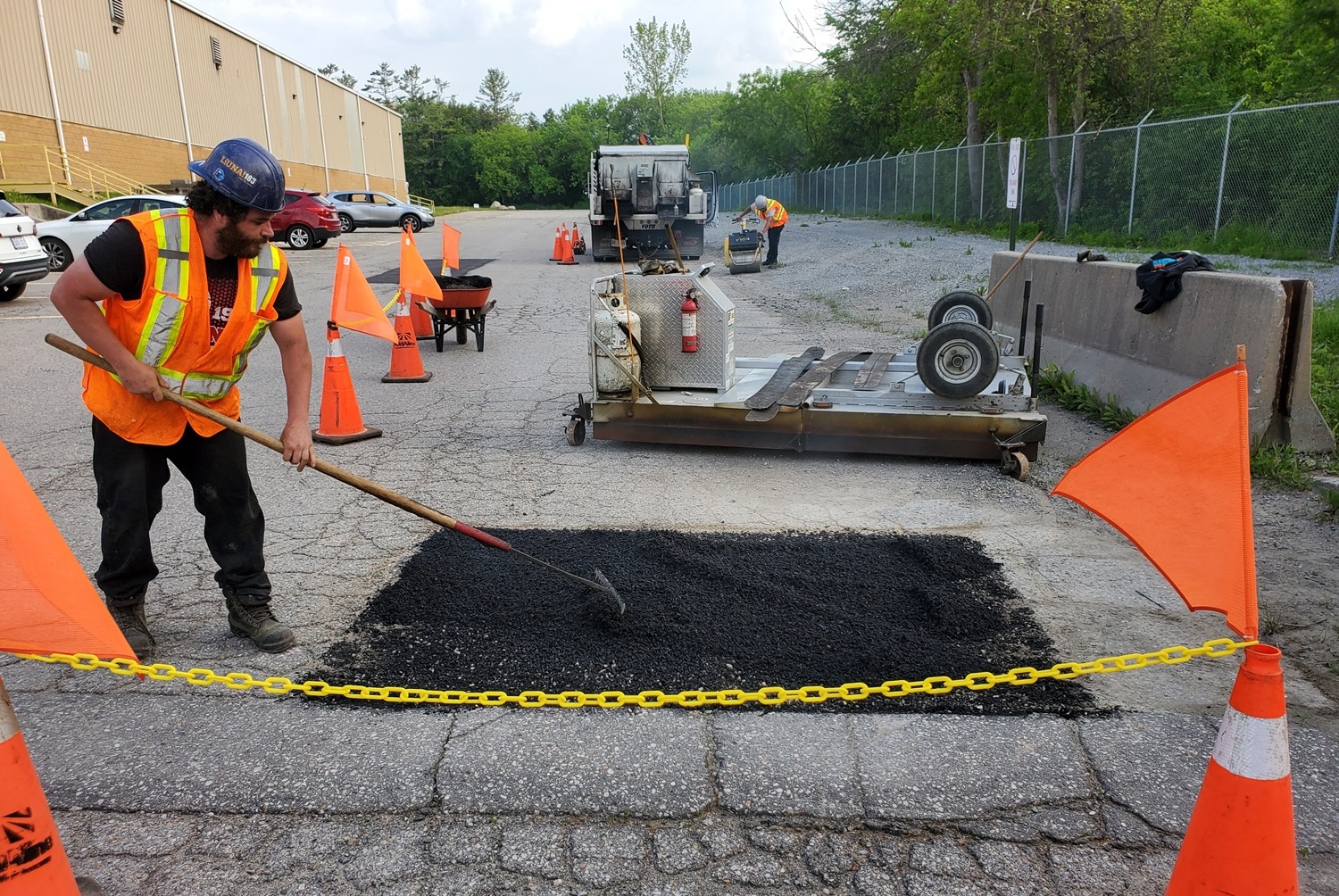Resources
Insights, News & Learning
Share this article
Asphalt 101: Parking Lot Maintenance - Important Things to Know
- May 11, 2025

Join us for our Asphalt 101: Parking Lot Maintenance webinar, where we dive into essential tips and expert advice for maintaining your parking lot. This session covers key topics such as theimportance of managing transitions and catch basins, proper crack filling, the pros and cons of asphalt overlays, and much more. Whether you’re looking to prevent costly repairs or enhance the safety and longevity of your parking lot, this webinar has you covered.
Ready to learn more? Watch the webinar and read the full summary below!
Webinar Breakdown: Asphalt 101
Transitions and Catch Basins
When there are changes in the materials around your parking lot, like from asphalt to concrete or steel, it’s important to check them often. These materials expand and contract at different speeds, especially when the weather changes. This can cause cracks and holes in the parking lot.
Why is this important? In winter and summer, different materials expand and shrink at different rates, which can cause problems. If you see cracks or dips, it’s a sign that something is wrong under the surface.
Catch Basins and Manholes: Quick Overview
In this webinar, Catch Basins and Concrete 101, we dive deeper into catch basins, manholes, concrete islands, and more. Here’s a quick overview:
- Catch basins (usually square) are used to collect rainwater. Manholes (usually round) are used to give access to pipes and utilities.
- Catch basins should always be lower than the parking lot, so the water flows into them. Manholes should be level with the ground.
- Most problems around these areas happen because of the asphalt shifting, not because the catch basin or manhole is sinking or rising.
Tip: If you see sand collecting around a catch basin, it might be due to a problem with the drainpipes at the base of catch basin. The asphalt surrounding the catch basin might look bad, but the problem is usually beneath surface.
Water Main Shutoffs
Water main shutoffs are important because they control the water supply to buildings. These should be level with the pavement, so they are easy to access. If they are too high, snowplows can damage them, and if they are too low, they could cause people to trip.
Crack filling is a good way to protect your parking lot. It stops water from getting into cracks, which can make the asphalt break apart. The material used for crack filling should stay soft and flexible, even after a few years. It’s important to clean the cracks before filling them so the material sticks well.
Note: If the cracks are very small (smaller than the width of a pencil), the crack fill will be ineffective. Crack fill needs a “space” to fill – it’s most effective on bigger cracks.
Sometimes, people add a thin layer of HL3 asphalt over an old parking lot. While this can make the parking lot look better, it doesn’t fix the underlying problems. The cracks and soft spots in the old asphalt will show up again quickly.
Recommendation: It’s usually better to repave the parking lot instead of just adding a thin layer of new asphalt.
Seal coating is used to cover asphalt and make it look nicer. It’s important to use the right product, especially if the asphalt is new. If it’s too shiny, it can be slippery, and the seal coat might not stick well to fresh asphalt.
Tip: Don’t use seal coat on new asphalt for several years. Once you start seal coating, it will become a maintenance issue for years to come (likely redo every two years).
Line painting helps keep a parking lot organized. It marks parking spots, shows where people should walk, and helps drivers know where to go. You should get line painting done during the warmer months, usually between May – October. The temperature should be at least 10°C and
rising for the paint to stick well.
Tip: Make sure you are comparing quotes from contractors who offer the same service, and ask for references to check the quality of their work.
- Repaving vs. Patching: If your parking lot is in bad shape, repaving is sometimes the best option. However, it’s more expensive and can cause more traffic problems. Talk to a professional to help you decide.
- Choosing Contractors: If a quote is much lower cost than others, ask questions. It might mean the contractor is using cheap materials or not doing a “complete” job or the same amount of work as another contractor. Make sure you are comparing quotes from contractors who offer the same service and ask for references to check the quality of their work.
We hope you found the information on asphalt and parking lot maintenance helpful. If you have any questions or need expert advice, don’t hesitate to reach out – we’re here to assist you every step of the way.
Ready to improve your parking lot? Contact Adeline Asphalt Maintenance today for professional services and guidance. We look forward to helping you maintain a safe and well-kept property!
Get in Touch
From emergency repairs to long-term capital planning, Addaline is here to make your job easier and your properties better.



Hi, this is a comment.
To get started with moderating, editing, and deleting comments, please visit the Comments screen in the dashboard.
Commenter avatars come from Gravatar.